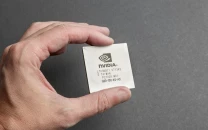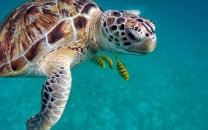SpaceX rocket carrying baby squid and ‘water bears’ takes off for ISS
Young specimens of the species Euprymna scolopes, known as bobtail squid, are on board for the trip
1622788728-0/111111-(2)1622788728-0-640x480.webp)
A SpaceX rocket took off on Thursday for the International Space Station carrying supplies for scientific experiments, including some surprising passengers – squid and virtually indestructible microorganisms called tardigrades.
The rocket, leased by NASA, launched from Florida at 1.29 pm local time. The Dragon capsule detached from the Falcon 9 rocket about 12 minutes after take-off and is expected to dock at the ISS on Saturday.
Young specimens of the species Euprymna scolopes, known as bobtail squid, are on board for the trip, so scientists can study the effect of zero gravity on the interactions between bacteria and their host organisms.
Musk's SpaceX wins $2.9 billion contract to land humans on moon
Some of the squids will be exposed to bacteria once onboard the ISS, while others will be left alone. After 12 hours, the specimens are preserved until their return to Earth, where they will be studied.
“Animals, including humans, rely on our microbes to maintain a healthy digestive and immune system,” said Jamie Foster, the principal investigator in the experiment, in a statement. “We do not fully understand how space flight alters these beneficial interactions.”
NASA completes major test on rocket that could take humans back to the moon
The experiment could help scientists in the future to develop techniques to protect the health of astronauts taking part in long-duration missions in space.
Also on board, the SpaceX rocket will be tardigrades, also known as “water bears” – microscopic organisms that can withstand extreme radiation, sizzling heat, the coldest temperatures of the universe, and decades without food.
The grub-like, eight-legged animals can come back from being dried out to a lifeless husk for decades, withstand near-zero pressure in outer space and the crushing depths of the Mariana Trench.



















COMMENTS
Comments are moderated and generally will be posted if they are on-topic and not abusive.
For more information, please see our Comments FAQ